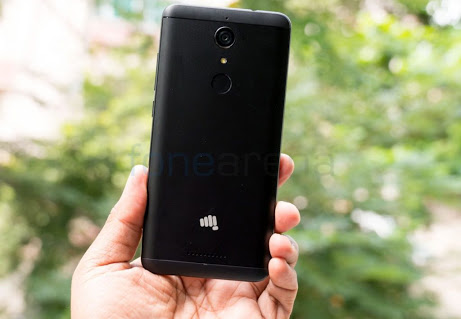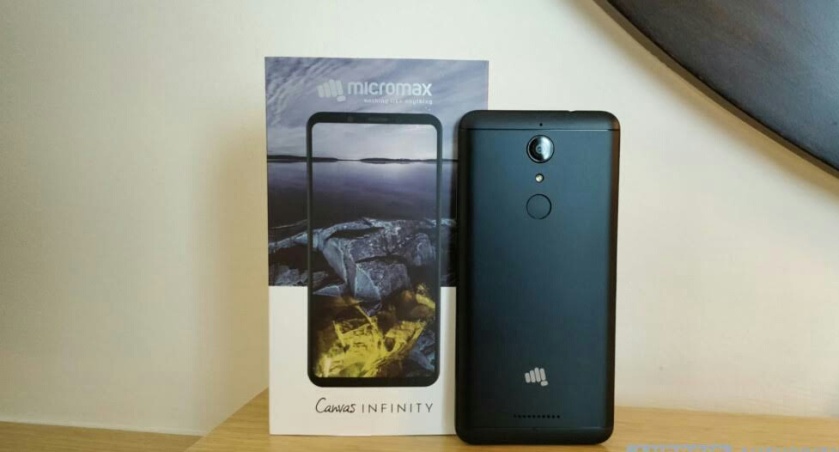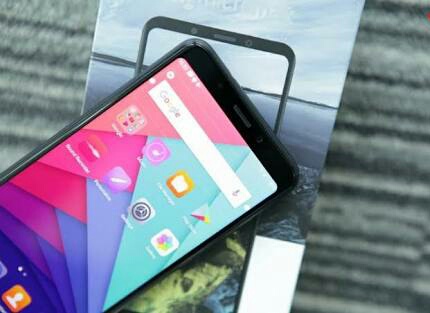Micromax Canvas Infinity
Fast forward to 2017, and we have big ones like Samsung and LG, making possibly the best use case scenario for an edge-to-edge or bezel-less phone. The Galaxy S8 and the G6 represent the future of all smartphones: wherein all smartphones would be a continuous sheet of glass with no physical buttons whatsoever. They’d be high-on specs with exceptionally good cameras. They’d be more than just novelty or a collector’s edition. They’d be the complete package.
Unlike the Galaxy S8 and the G6, however, the Canvas Infinity phone from Micromax, costs just Rs 9,999
Having said that, there’s an inherent problem with uber-cool futuristic technology. It is also expensive. While the Galaxy S8 costs around Rs 60,000 the G6 is available for around Rs 40,000: which means that they are still largely inaccessible for a significant chunk of the audience. They are too expensive. Enter home grown manufacturer Micromax and its answer to the Galaxy S8 and the G6 — at least in terms of bringing more of screen in less of body — the Canvas Infinity. Just like the Galaxy S8 and the G6, the Canvas Infinity phone from Micromax, also has an unusually tall screen and an unusual screen aspect ratio pf 18:9. Just like the Galaxy S8 and the G6, the Canvas Infinity phone from Micromax, has also been designed to offer more screen in a pint-sized form factor. Unlike the Galaxy S8 and the G6, however, the Canvas Infinity phone from Micromax, costs just Rs 9,999, which is one fifth of what the Galaxy S8 costs and one fourth of LG G6 price in the market.
“The next year will see innovation on screens, be it the bezel less phones, curved screens, sharper resolutions etc. As more visual data is consumed on phones, users will demand screens to be improved and brands will follow,” Rahul Sharma who is co-founder, Micromax Informatics Ltd. Explained to India Today Tech not long ago.” And Micromax would want to get their first, as far as massification of the technology is concerned. Hence, the Canvas Infinity.”
The USP of the Infinity phone is its unusual display that boasts of an aspect ratio of 18:9 as opposed to a regular 16:9. The unusual 18:9 aspect ratio (18.5:9 in the case of the Galaxy S8) makes phones longer than wider and is harbinger of edge-to-edge screen design that in turn leads to more real estate on a compact form factor. The Micromax Canvas Infinity, likewise, is a 5.7-inch phone, something that would make you believe — going by its specs — that it would be a huge phone. Only it isn’t.
Micromax, just like Samsung and LG, has shaved off the top and bottom bezels, as well as the side bezels, stretching the screen on all sides so it occupies a much smaller footprint than a regular 5.7-inch phone. Also the phone comes with subtle curves on the back that seemingly melts into the front that has 2.5D (curved) glass. This further enhances ergonomics and usability of the phone with one hand. The idea, just like it is in the case of the Galaxy S8 and the G6, is to offer more screen in a pint-sized phone and to make every inch of that screen count. The Canvas Infinity, for your reference, offers the same 83 per cent screen-to-body ratio as the Galaxy S8.
Moving on, the Canvas Infinity comes with a 1440×720 pixel (HD) resolution and an IPS screen that gets really bright, but viewing angles could have been better. Although colours on-board are mostly accurate, the phone’s large screen is best enjoyed while viewing straight up. Tilt the phone and there’s definite colour shifting, mostly towards the warmer end of the spectrum. This is one area where the Infinity doesn’t match up to the high-standard set by the expensive Android phones. But then you don’t really expect it to, given its price. The Canvas Infinity, although it is a phone deigned from grounds-up for multimedia consumption looks like it has been designed more for individual consumption than sharing it with your group.
In order to make full use of the Canvas Infinity’s 18:9 screen, also, you’ll need content that supports the Canvas Infinity’s native 18:9 aspect ratio. That content is, like it or not, scarce at this point of time although you will find some on YouTube. Videos that don’t support the Canvas Infinity’s native 18:9 aspect ratio will play fine, but, with letter-boxing (black bars on either side) of the screen. The same is true for games as well. While games like Asphalt 8: Airborne support the Canvas Infinity’s native aspect ratio, others like Crossy Road don’t. Web pages look fine though.
The Canvas Infinity may not boast of similar outstanding screen specs — also its hardware may not be in the same league — as that of the Galaxy S8 (or the G6), but, that’s besides the point. The point is Micromax has been able to somehow get hold of the Galaxy S8 and the G6’s USP feature — the Infinity screen/Full Vision display — and put it inside a ridiculously more mainstream package, and as far as multimedia experiences are concerned, it’s not that it is lacking or anything. Surely, it could have done better with a 1080p screen, or with better viewing angles, or with a dedicated colour correction mode, but, at Rs 9,999 you’re more likely to not miss any of these features when you realize what the Canvas Infinity brings to the table: Samsung Galaxy S8-like experiences at dirt cheap price. Or in other words, you can say it’s poor man’s Galaxy S8 or LG G6. If that wasn’t enough, the company will offer repair or replace services in 24 hours, should something go wrong with your purchased unit, it has confirmed.
The phone also seems to have decent core hardware inside, as far as first impressions are concerned. The Micromax Canvas Infinity is powered by a fairly-efficient 1.4GHz quad-core Qualcomm Snapdragon 425 processer coupled with Adreno 308 GPU and 3GB of RAM. The phone comes with 32GB of internal storage which is further expandable by up to 128GB via a dedicated micro-SD card slot.
The Micromax Canvas Infinity is a 5.7-inch phone something that would make you believe — going by its paper specs — that it would be a huge phone. Only it isn’t
The dual-SIM phone runs Android 7.1.2 Nougat software (and will be up-gradable to the just announced Android Oreo in the days to come, according to the company) and supports 4G LTE, VoLTE and USB OTG (via micro-USB 2.0). The phone has three separate slots: two for two different SIM cards and one for micro-SD, something that is fast becoming a rarity in phones. The phone comes with a rear facing mono speaker out. It is further backed by a 2,900mAh battery.
The Snapdragon 425 may be an entry-level chipset, but it should get the job done for most users. Software-wise the phone does pack in more of iOS than Android, but, then that’s the case with a majority of OEMs these days. Micromax has itself toiled with stock Android in the past, and it would have been better had the company stuck with stock Android in the Canvas Infinity but that’s not to say that is lacking or anything as far as all-round experience is concerned. We will of course have more to say about the phone’s performance and user experience in our full review.
Moving on to cameras, the Canvas Infinity sports a 13-megapixel camera on the rear with f/2.0 aperture and a 16-megapixel selfie shooter on the front that comes with its own dedicated bokeh selfie mode that automatically blurs the background for fancy portrait selfies. Sounds fancy but we will have more to say about the performance in the coming days.
The autofocus on the rear camera works well for usual shots in normal to good lighting conditions. It is not very fast, but locks in accurately most of the time and brings out sharp outlines in photos. Though in macro shots, you do get to see some focus hunting and you need to adjust it with touch to focus. There is minimal shutter lag and the photos appear for preview as soon as you click it.
The phone can record video in full-HD and panorama and time lapse videos as well. The details captured by the rear camera are quite nice, though we will let you know more about it in the full review.
Micromax seems to be selling complete smartphone experiences with the Canvas Infinity, and as far as smartphone experiences are concerned, the Canvas Infinity seems to be right on track. It may not be the most powerful phone, it may not have the best-in class camera, it may not have the best-in class software, it may not have the biggest battery, but, when it comes to bringing the edge-to-edge screens to masses, the Canvas Infinity is definitely up there. It is also the first to get there. You can say that LG’s recently launched Q6 is also a very competitive option, but, also it costs close to Rs 15,000.
The Canvas Infinity may not be perfect, but, it should start a trend and push companies to strive for more. More for less. Watch this space for our full review of the Micromax Canvas Infinity in the days to come.


